Many pet owners love capturing beautiful photos of their beloved animals, especially dogs, much like new parents enjoy taking pictures of their children. The best cameras for dog photography help create stunning pet portraits.
Photographing dogs, and other pets, blends elements of portrait photography with sports or action photography.
At times, you may be able to pose your dog, while other moments will require quick reflexes to capture the perfect shot.
The fundamentals of great dog photography are similar to those in sports, action, wildlife, and portrait photography. Read on to discover which camera suits you best!
1. Canon EOS R6 Mark II
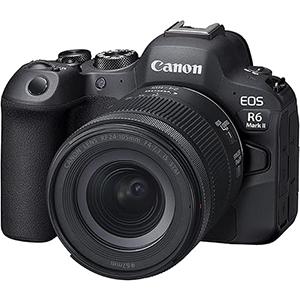
The Canon EOS R6 Mark II Mirrorless Camera with RF24-105mm F4-7.1 IS STM Lens Kit is a versatile tool for both photography and videography enthusiasts. This camera boasts a 24.2-megapixel full-frame CMOS sensor, delivering high-quality images with impressive detail and clarity. The DIGIC X Image Processor enhances performance, allowing for an ISO range of 100-102400, expandable to 204800, which is ideal for low-light conditions.
High-speed continuous shooting is a notable feature, with up to 12 fps using the mechanical shutter and up to 40 fps with the electronic shutter. This makes it perfect for capturing fast-moving subjects. The Dual Pixel CMOS AF II system covers nearly the entire frame with 1,053 AF zones, ensuring precise focus on subjects, whether they are people, animals, or vehicles.
Video capabilities are equally impressive, with 4K recording at up to 60 fps and 6K oversampling for superior video quality. The in-body image stabilization provides up to 8 stops of shake correction, which is beneficial for handheld shooting. The RF24-105mm lens offers a versatile zoom range, making it suitable for various shooting scenarios, from wide-angle landscapes to close-up portraits.
Overall, the Canon EOS R6 Mark II is a powerful and flexible camera that caters to a wide range of creative needs.
2. Sony Alpha 7 IV

The Sony Alpha 7 IV is a highly capable full-frame mirrorless camera designed for both photographers and videographers. It features a 33MP Exmor R back-illuminated CMOS sensor, which ensures excellent image quality with high resolution and low noise. The BIONZ XR image processor enhances performance, providing up to 10 fps continuous shooting with AF/AE tracking, making it suitable for capturing fast-moving subjects.
Video recording capabilities are robust, with 4K 60p recording and 7K oversampling for detailed and high-quality footage. The camera supports 10-bit 4:2:2 color depth, which is beneficial for professional-grade video production. The S-Cinetone color profile, inherited from Sony’s professional cinema line, delivers beautiful color expression and skin tones.
Autofocus performance is impressive, with 759 phase-detection points covering approximately 94% of the image area. This ensures accurate and reliable focus, even in challenging conditions. The camera also includes real-time Eye AF for humans, animals, and birds, enhancing portrait and wildlife photography.
The Alpha 7 IV is equipped with a 3.68 million-dot OLED viewfinder and a 3-inch vari-angle touchscreen LCD, providing flexibility in composing shots from various angles. Connectivity options include Wi-Fi, Bluetooth, and USB-C, facilitating easy sharing and remote control. This camera is a versatile tool for creators seeking high performance and flexibility.
3. Nikon Z 9
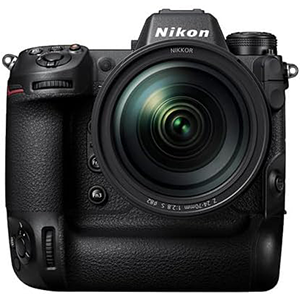
The Nikon Z 9 is a flagship full-frame mirrorless camera designed for professional photographers and videographers. It features a 45.7MP stacked CMOS sensor, delivering exceptional image quality with high resolution and dynamic range. The EXPEED 7 image processor enhances performance, enabling continuous shooting at up to 120 fps for capturing fast-moving subjects with precision.
The autofocus system is advanced, utilizing deep learning technology for subject detection and tracking. This system can identify and follow people, animals, and vehicles, ensuring sharp focus in various shooting scenarios. The camera also offers impressive video capabilities, including 8K video recording at 30p and 4K at 120p, providing filmmakers with high-quality footage options.
The Z 9 includes a blackout-free electronic viewfinder, allowing for uninterrupted shooting and real-time monitoring. The 4-axis tilting touchscreen LCD adds flexibility, making it easier to shoot from different angles. The robust build quality ensures durability, suitable for demanding professional use.
Connectivity options such as Wi-Fi and Bluetooth facilitate easy sharing and remote control. Dual CFexpress Type B card slots provide ample storage and fast data transfer. The Nikon Z 9 is a powerful tool for professionals seeking top-tier performance in both photography and videography.
4. Fujifilm X-T5
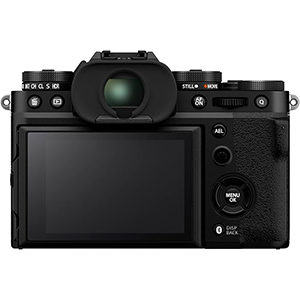
The Fujifilm X-T5 Mirrorless Digital Camera is a remarkable addition to the X Series, offering a blend of advanced technology and classic design. It features a 40.2MP X-Trans 5 HR CMOS sensor, which delivers stunning image quality with exceptional detail and color accuracy. The X-Processor 5 enhances performance, ensuring quick and efficient image processing.
This camera is equipped with a five-axis in-body image stabilization (IBIS) system, providing up to seven stops of compensation. This feature is particularly useful for handheld shooting, reducing the impact of camera shake. The electronic shutter allows for action-freezing speeds up to 1/180,000 sec, making it ideal for capturing fast-moving subjects.
The X-T5 also supports 6.2K video recording at 30p and 4K at 60p, catering to videographers who require high-resolution footage. The three-way tilting LCD screen offers flexibility in composing shots from various angles, enhancing the shooting experience. Additionally, the camera includes 19 Film Simulation modes, allowing photographers to replicate the look of classic Fujifilm film stocks.
With its compact and lightweight body, the X-T5 is easy to carry, making it a great choice for photographers on the go. This camera combines modern imaging capabilities with a user-friendly interface, making it a versatile tool for both professionals and enthusiasts.
5. Sony Alpha 1

The Sony Alpha 1 is a groundbreaking full-frame mirrorless camera, designed to meet the needs of professional photographers and videographers. It boasts a 50.1MP stacked Exmor RS CMOS sensor, which provides exceptional image quality and high-speed performance. The BIONZ XR image processing engine enhances this capability, allowing for continuous shooting at up to 30 fps with full AF/AE tracking.
This camera excels in video recording, offering 8K video at 30p and 4K at 120p, making it a versatile tool for high-resolution video production. The electronic viewfinder features a 240 fps refresh rate, ensuring a smooth and responsive viewing experience. The Alpha 1 also includes advanced autofocus capabilities, with 759 phase-detection points covering approximately 92% of the image area, ensuring precise and reliable focus.
The camera’s build quality is robust, designed to withstand the rigors of professional use. It includes dual CFexpress Type A/SD card slots, providing ample storage and fast data transfer. Connectivity options such as Wi-Fi, Bluetooth, and USB-C facilitate easy sharing and remote control. The Sony Alpha 1 is a powerful and versatile camera, ideal for professionals seeking top-tier performance in both photography and videography.
Best Settings for Dog Photography
There’s no single exposure or focus setting that works for every situation in dog photography, whether it’s for portraits or action shots, but these guidelines can help you get started:
- High ISO – To achieve fast shutter speeds, you’ll often need to adjust the exposure triangle, starting with raising the ISO. However, avoid setting the ISO too high, as it can introduce unwanted digital noise. This noise, similar to film grain, can reduce the quality of both photos and videos. Shooting in good lighting conditions, like daylight, will help keep your ISO at a manageable level.
- Fast Shutter Speed and Wide Aperture – A fast shutter speed is crucial for freezing action. To balance exposure, pair it with a wide-open aperture, which reduces the depth of field. This selective focus technique is often desirable in pet photography, helping you focus sharply on your dog while blurring out distractions.
- Broad Area Continuous AF – A wide autofocus (AF) area allows you to track the dog’s movement while keeping them in focus, no matter where they are in the frame. Continuous AF is better suited for action shots, but single-shot AF works well for still moments.
- RAW over JPEG – While shooting in JPEG allows for faster write speeds to memory cards, using RAW format gives you more data to work with during editing. This extra information can be valuable when handling the different genres involved in pet photography.
Tips for Capturing Great Dog Photos
- Maintain Control – Use treats to keep the dog’s attention. If it’s not your own dog, ensure the owner is comfortable with you offering treats, and check which types are acceptable. You can also use hand signals or vocal commands to guide the dog, but always be kind—pets are our friends.
- Use Portrait Lighting – Standard portrait lighting works well for semi-posed pet shots, just as it does for people. For action shots or environmental portraits, treat your dog like a moving subject and consider using or skipping an on-camera flash based on the scene.
- Follow the Motion – Some of the best dog photos capture them at play. This requires action photography skills, particularly when shooting larger dogs. Try capturing images at the peak of action for dynamic results, rather than freezing fast motion at every moment.
- Use a Reasonable ISO – To maintain fast shutter speeds, balance your exposure settings with an appropriate ISO level. While fast lenses are ideal, they tend to be large, heavy, and expensive. Raising the ISO moderately can help achieve the necessary shutter speeds without compromising quality.
- Set Multiple Focus Points – Relying solely on the central focus point may cause you to miss some great shots during fast-paced, action-oriented dog portraits. Using multiple focus points will help keep your subject sharp as they move.
What I Looked for in the Best Cameras for Dog Photography
- Sensor Quality – A high-quality sensor is key for capturing excellent images. APS-C sensors are an ideal choice for dog photography, offering high resolution in a smaller size than full-frame cameras. This compact size makes the cameras and lenses more portable.
- Lenses – Interchangeable lenses offer versatility, allowing you to select the best lens for different scenarios. If using a camera with a built-in zoom, look for one with a fast aperture and good telephoto range. Kit lenses are sharp but often have slower maximum apertures.
- High ISO Performance with Low Noise – To capture action shots effectively, a higher ISO is often necessary. The best cameras for dog photography should deliver low-noise images even at higher ISO settings.
- Moveable Screen – A fully articulated or tilting viewscreen is a useful feature, especially when shooting from different angles, such as ground level or overhead. While not always found on budget-friendly models, this feature allows for more creative compositions.
- Fast and Accurate Autofocus – Since dog photography combines elements of sports and portrait photography, fast and precise autofocus is essential for sharp, usable images. The best cameras will offer responsive autofocus for both action-packed and still moments.

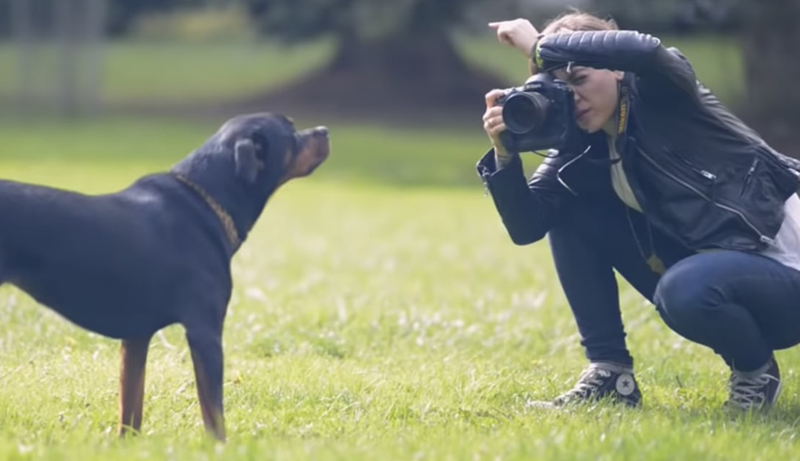
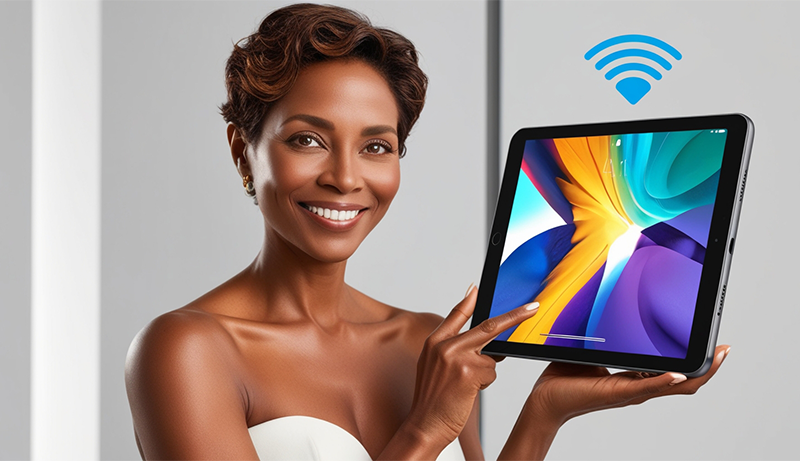
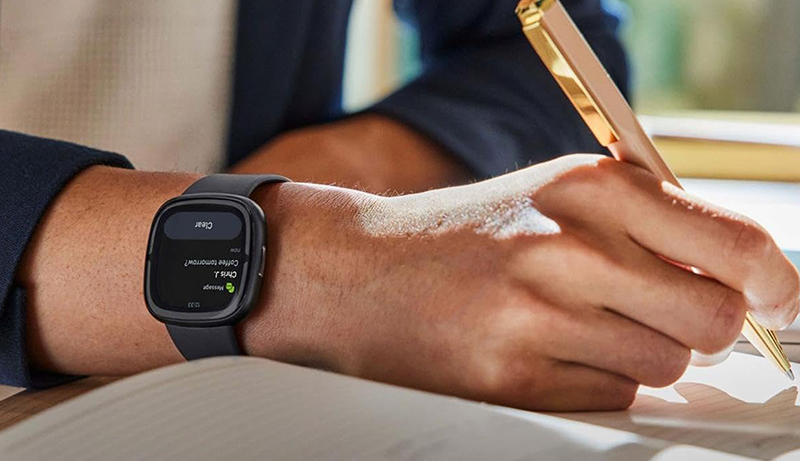
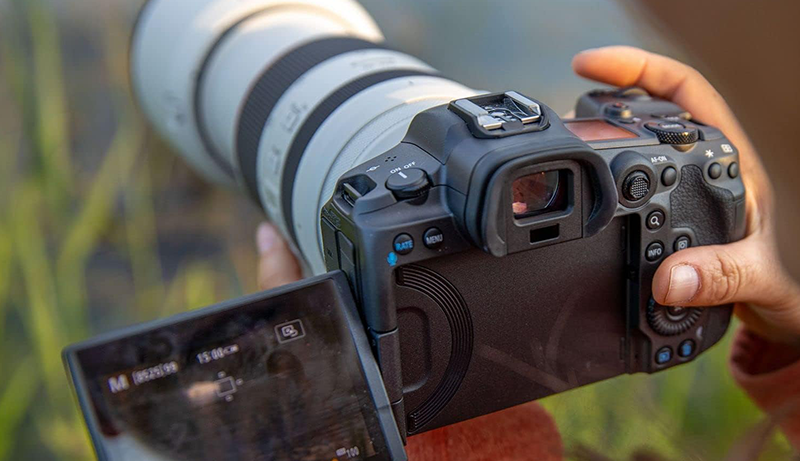
Leave a Reply